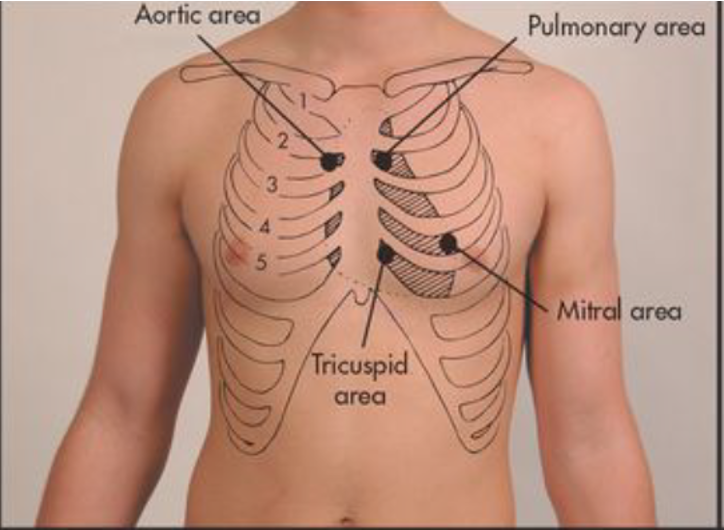Sequence of Cardiovascular Examination
General observations -
Breathless at rest, cyanosis
-
Hands - Temperature, peripheral cyanosis, splinter haemorrhages, tar staining, xanthomata
-
Radial pulse - Rate, rhythm, collapsing
-
Arm - Blood pressure, brachial pulse waveform
-
Eyes - Arcus, xanthelasma, anaemia
-
Face - Malar flush
-
Lips and tongue - Central cyanosis
-
Neck - JVP, carotid pulse
-
Chest-Inspection - Scars, pulsations Palpation - Apex, thrils, heaves-Auscultation - Heart sounds, added sounds, murmurs, carotid bruits, basal crepitations
Other - Radiofemoral synchrony, peripheral pulses, oedema, pulsatile liver, urinalysis

So proceed in an orderly fashion:
-
- General Examination (Related one)
Always proceed in an orderly fashion
Follow these steps when examining the heart
- Inspect
- Palpate
- Auscultate
- General Examination (Related one)
Always proceed in an orderly fashion
Follow these steps when examining the heart
-
- Blood vessel exam
-
- Heart Examination (Note: Percussion is omitted when examining the heart.
- Vital Signs - Note BP (both arms), T, RR, HR, 02, pain level
- General - Note patient’s general appearance
- Signs of heart failure in other organs (lungs, liver, lower limbs)
- Fundus examination (arterial changes, haemorrhages, exudates and paliloedema) in arterial hypertension
Precordium
- Inspection CVS
- Palpation CVS
- Percussion - not routinely done
- Auscultation CVS
- -Back
- -Abdomen
- -Lower limbs

General
-
Hands
-
Face
-
Neck
-
General Examination
-
Position patient at 45 degrees
-
General appearance: body built: obese, Cachexia
-
Marfan’s syndrome
-
Down’s syndrome

Examination of eyes
- xanthelasma
- CORNEAL Arcus
- Roth spot


